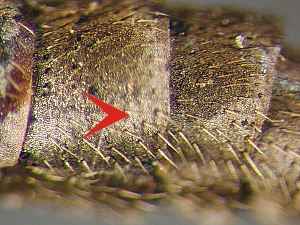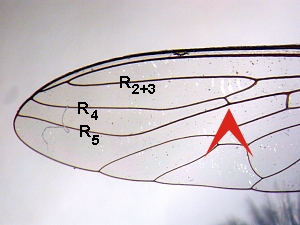Apocleinae
Asilinae
Dasypogoninae
Dioctriinae
Laphriinae
Laphystiinae
Leptogastrinae
Ommatiinae
Stenopogoninae
Stichopogoninae
Trigonomiminae
Apocleinae & Asilinae (part)
References: Artigas, J.N. & Papavero, N. (1997): The American genera of Asilidae (Diptera): Keys for identification with an atlas of female spermathecae and other morphological details. IX.1. Subfamily Asilinae Leach (including Apocleinae Lehr): Key to generic group. - Arquivos de Zoologia do Estado de Sao Paulo 34(2): 57-63; Sao Paulo. Artigas, J.N. & Papavero, N. (1997): The American genera of Asilidae (Diptera): Keys for identification with an atlas of female spermathecae and other morphological details. IX.2. Subfamily Asilinae Leach - Efferia -group, with the proposal of five new genera and a catalogue. - Arquivos de Zoologia do Estado de Sao Paulo 34(3): 65-95; Sao Paulo. Artigas, J.N. & Papavero, N. (1995): The American genera of Asilidae (Diptera): Keys for identification with an atlas of female spermathecae and other morphological details. IX.3. Subfamily Asilinae Leach, Eichoichemus - group, with the proposal of two new genera and a catalogue. - Gayana. Zoologia. Universidad de Concepcion, Instituto Central de Biologia 59(1): 97-102; Concepcion. Artigas, J.N. & Papavero, N. (1995): The American genera of Asilidae (Diptera): Keys for identification with an atlas of female spermathecae and other morphological details. IX.4. Subfamily Asilinae Leach -Glaphyropyga group-, with the proposal of two new genera and a catalogue. - Boletin de la Sociedad de Biologia de Concepcion 66: 11-33; Concepcion. Artigas, J.N. & Papavero, N. (1995): The American genera of Asilidae (Diptera): Keys for identification with an atlas of female spermathecae and other morphological details. IX.5. Subfamily Asilinae Leach -Lochmorhynchus group-, with a catalogue of the Neotropical species. - Gayana. Zoologia. Universidad de Concepcion, Instituto Central de Biologia 59(2): 131-144; Concepcion. Artigas, J.N. & Papavero, N. (1997): The American genera of Asilidae (Diptera): Keys for identification with an atlas of female spermathecae and other morphological details. IX.6. Subfamily Asilinae Leach - Mallophora -group, with a catalogue of the Neotropical species. - Arquivos de Zoologia do Estado de Sao Paulo 34(4): 97-120; Sao Paulo. Artigas, J.N. & Papavero, N. (1995): The American genera of Asilidae (Diptera): Keys for identification with an atlas of female spermathecae and other morphological details. IX.7. Subfamily Asilinae Leach, Proctacanthus-group, with the proposal of a new genus and a catalogue. - Gayana. Zoologia. Universidad de Concepcion, Instituto Central de Biologia 59(2): 145-160; Concepcion. Artigas, J.N. & Papavero, N. (1995): The American genera of Asilidae (Diptera): Keys for identification with an atlas of female spermathecae and other morphological details. IX.8. Subfamily Asilinae Leach -Eicherax group-, with a catalogue of the Neotropical species. - Boletin de la Sociedad de Biologia de Concepcion 66: 35-42; Concepcion. Artigas, J.N. & Papavero, N. (1995): The American genera of Asilidae (Diptera): Keys for identification with an atlas of female spermathecae and other morphological details. IX.9. Subfamily Asilinae Leach -Myaptex-group, with the proposal of two new genera and a catalogue. - Revista chilena de Entomologia 22: 55-73; Santiago. Artigas, J.N. & Papavero, N. (1995): The American genera of Asilidae (Diptera): Keys for identification with an atlas of female spermathecae and other morphological details. IX.10. Subfamily Asilinae Leach - Lecania-group, with a catalogue of the Neotropical species. - Theoria 4: 33-56; Concepcion. Martin, C.H. (1975): The generic and specific characters of four old and six new Asilini genera in the western United States, mexico and Central America (Diptera: Asilidae). - Occasional Papers of the California Academy of Sciences 119: 1-107; San Francisco.
Abdominal tergites 2 - 3 or more without lateromarginal bristles . . . . . Proctacanthus-group (part, Proctacanthella part)
 |
| |
| Abdominal tergites 2 - 3 or more with lateromarginal bristles. |
|
| Scutellum tumid, no sign of an impressed rim . . . . . Myaptex-group: Furcilla Martin, 1975 | ||
| Scutellum with clear impressed rim . . . . . Glaphyropyga-group: Nevadasilus Artigas & Papavero, 1995 |
| [Efferia-group] Wing with 3 submarginal cells, i.e., an extra vein arises in R4 near its junction with R5, which unites R4 with R2+3 . . . . . Efferia Coquillet, 1893 | ||
| Wing with only 2 submarginal cells. |
|
| Fork of R4 and R5 much or just before apex of discal cell. |
| |
| Fork of R4 and R5 opposite to or beyond apex of discal cell. |
|
| Ocellar tubercle without bristles, only short hairs present. Female ovipositor conical. Male hypandrium produced, with a tuft of bristles on hind margin . . . . . Triorla Parks, 1968 | ||
| Ocellar tubercle with bristles. Ovipositor either rounded at tip, not split in dorsal view, or pointed and split at tip in dorsal view. Male hypandrium not produced, with usual hairs on hind margin . . . . . Pogonioefferia Artigas & Papavero, 1997 |
| R5 curves backwards at the tip and meets the costa below the apex of wing, i.e., costal section between tip of R5 and tip of M1 shorter than costal section between tips of R1 and R5 . . . . . Nerax Hull, 1962 | ||
| R5 curves forward, meeting the costa above the apex of wing, i.e., costal section between tip of R5 and tip of M1 larger than costal section between tips of R1 and R5. |
|
| Scutum compressed laterally and the mid-dorsal line with narrow crest of long hairs or bristles . . . . . Carinefferia Artigas & Papavero, 1997 | ||
| Scutum not compressed laterally, hairs anteriorly usually short, but if long not covering the dorsocentral as well as the central row. |
|
| Scutum anteriorly with numerous erect hairs as long as scape and pedicel together. Scutellum usually with numerous marginal bristles. Bristles of tarsi usually white . . . . . Aridefferia Artigas & Papavero, 1997 | ||
| Scutum anteriorly usually with hairs shorther than scape and pedicel together. Scutellum usually with not more than 6 - 8 marginal bristles. Bristles of tarsi usually black. |
|
| Male abdomen ventrally with prominent tubercles on segments 4 - 6. Rather small, slender flies . . . . . Tuberculefferia Artigas & Papavero, 1997 | ||
| Male abdomen without ventral tubercles. Small to large species, the small species frequently with short stout bristles in the upper part of the mystax . . . . . Albibarbefferia Artigas & Papavero, 1997 |
| [Proctacanthus-group] R5 ends below wing apex. Medium-sized flies (12 - 16 mm), with slender body . . . . . Proctacanthella Bromley, 1934 | ||
| R5 ends above wing apex. |
|
| Mystax formed by very dense, long, oral hairs and short ones above; the mystax forms a tuft that hides the integument where hairs and bristles are implanted . . . . . Eccritosia Schiner, 1866 | ||
| Mystax of usual shape . . . . . Proctacanthus Macquart, 1838 |
| [Mallophora-group] Claws acute. Facial gibbosity waek, usually confined to lower half of face: mystax extending up to antennal basis, bristles usually confined to oral margin. Male epandria short, slender, frequently with dense white hairs above. Female ovipositor beginning with segment 6, 7 or 8 . . . . . Promachus Loew, 1848 | ||
| Claws obtuse. Other combination of characters. |
|
| Face 1/6 width of head below antennae. Frons between antennae and ocelli as long as wide. Female ovipositor beginning with segment 6. Male epandria 8 times as long as wide; aedeagus with 3 divergent tubes, more or less long . . . . . Amblyonychus Hermann, 1921 | ||
| Face 1/5 width of head or more below antennae. Frons between antennae and ocelli wider than long. Female ovipositor beginning with segment 8. Male epandria variable. |
|
| Lower half of face swollen, long hairs of mystax confined to gibbosity; oral bristles present at times, short sparse hairs between antennae and gibbosity. Fore and middle femora swollen, hind femur slender, hind tibia bowed, with 1 - 4 strong bristles on anterior side . . . . . Mallophora Macquart, 1838 | ||
| Face slightly and evenly convex. Other combination of characters. |
|
| The dense, erect scutellar hairs parted at middle. Tarsomeres 2 - 4 as long as wide. Face 1/3 width of head below antennae. Male epandria about three times as long as wide. Hind femur with dorsal anterior row of bristles . . . . . Promachella Cole & Pritchard, 1964 | ||
| Dense erect scutellar hairs unparted. Tarsomeres 2 - 4 about twice as wide as long. Face 1/4 to nearly 1/3 width of head below antennae. Male epandria about twice as long as wide. Aedegaus with only one tube. Hind femur with only apical aneterior dorsal bristles . . . . . Megaphorus Bigot, 1857 |
Contents: © Fritz Geller-Grimm, Jorge N. Artigas, 2007
Layout & images: © Fritz Geller-Grimm, 2007
















































































